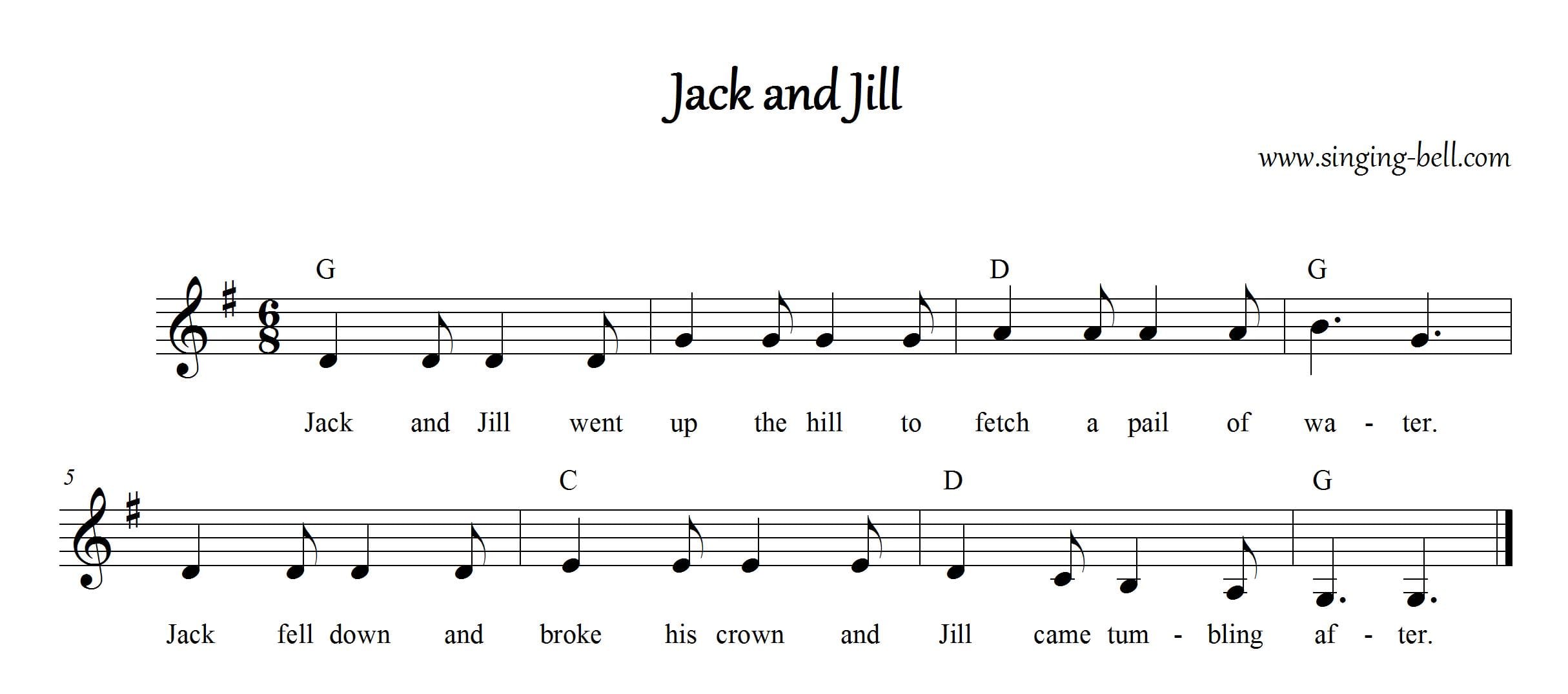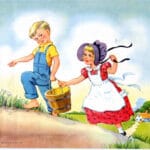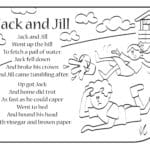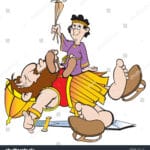Unpacking a Classic Children’s Rhyme
We all know the catchy tune of “Jack & Jill.” It’s a story we’ve heard as kids, maybe even sung with our own children. But have you ever stopped to think about what this simple rhyme is really about? Let’s dive into the world of “Jack & Jill”, exploring its history, possible hidden meanings, and why it continues to fascinate us.
The Rhyme We All Know (and Maybe Love)
Let’s refresh our memory with those familiar lines:
Jack and Jill went up the hill\nTo fetch a pail of water.\nJack fell down and broke his crown,\nAnd Jill came tumbling after.
It’s straightforward, easy to remember, and kind of funny when you think about it—poor Jack and Jill! Over time, people have added their own twists to the rhyme, making it even more interesting.
Where Did It All Begin? A Look Back in Time
The earliest written version of “Jack & Jill” appears in England around 1765. However, the story’s roots might be even older. Some believe it connects to ancient Norse myths, while others suggest it might be linked to King Charles I of England. Imagine, a royal connection!
More Than Meets the Eye? The Potential for Hidden Meanings
While it seems like a simple story, “Jack & Jill” might actually be full of symbolism. Some people think it’s a warning about the dangers of everyday life, while others see it as a reflection on traditional gender roles. There’s even a theory that it’s a secret political message! What do you think? It’s fascinating to see how one rhyme can have so many different interpretations.
Learning Through Play: The Educational Power of Jack & Jill
“Jack & Jill” isn’t just fun to recite; it’s a valuable tool for young learners:
- Language Skills: The rhyming words may help children develop their vocabulary and language skills.
- Movement: Acting out the rhyme encourages physical activity and coordination.
- Thinking Skills: Kids start to understand cause and effect (“Jack fell down because…”), learn about order (first they go up, then Jack falls), and even problem-solve (how could they have avoided the fall?).
- Emotional Intelligence: “Jack & Jill” can spark discussions about empathy (feeling sorry for Jack), helping others (what should Jill do?), and learning from mistakes.
Making it Fun: Activities Inspired by the Rhyme
Bring “Jack & Jill” to life with these engaging activities:
- Sing-Along Time: The catchy tune makes it perfect for singing together.
- Let’s Pretend: Encourage kids to act out the story, using their imaginations to create props and costumes.
- Arts and Crafts: Drawing, painting, or even making puppets of Jack and Jill can bring the rhyme to life.
- Game On: Organize a hill-climbing race, a water-carrying challenge, or even a rhyming game inspired by the rhyme.
Jack & Jill Around the World: A Global Phenomenon
This simple rhyme has traveled far beyond England, with different versions appearing in countless languages and cultures. These variations often add a unique local flavor to the story, suggesting a universal appeal.
A Fresh Take: Modern Adaptations of Jack & Jill
“Jack & Jill” continues to inspire new creations! We see it pop up in children’s books, songs, and even movies. These modern interpretations keep the rhyme fresh and relevant for today’s audiences.
A Timeless Classic
“Jack & Jill” is more than just a nursery rhyme; it’s a story that has been shared and enjoyed for centuries. Its simplicity, adaptability, and potential hidden depths make it a true timeless treasure. What other secrets do you think this classic rhyme holds?
Unveiling the Dark Side of “Jack and Jill”: Exploring Hidden Meanings
We’ve all heard the nursery rhyme “Jack and Jill,” right? It seems like a simple little tune about two kids fetching water. But what if there’s a whole lot more to it than meets the eye? Some folks believe “Jack and Jill” hides some pretty dark and mysterious meanings. Intrigued? Let’s dive in!
One theory takes us back in time to the reign of King Charles I of England. King Charles wasn’t exactly Mr. Popular, especially when he slapped some hefty taxes on liquids and measurements. Guess what he called those taxes? You got it: “Jack” and “Jill.” Some historians think the rhyme might be a subtle way people poked fun at the king and his unpopular taxes.
But wait, there’s more! Another historical theory suggests the rhyme might be about Viking law. Back then, if you had a property dispute, you needed two witnesses to settle things – kind of like Jack and Jill heading up the hill together. Could this be a coincidence? Maybe, maybe not.
Let’s move beyond history for a second. “Jack and Jill” is also brimming with symbolism. Think about it: the hill they climb could represent the challenges and roadblocks we all face in life. Their tumble down the hill? That could be those inevitable setbacks and failures we all experience. And the water they were trying to fetch? Water is essential for life, but it can also be dangerous – kind of like the ups and downs of life itself.
Here’s where it gets even more interesting. Some scholars suggest “Jack and Jill” might even have roots in Norse mythology. There’s a myth about two kids named Hjuki and Bil who are taken by the moon god while they’re out fetching water. Sound familiar? This connection has led some to believe that “Jack and Jill” could be a warning about the dangers lurking in the natural world.
So, what’s the real meaning of “Jack and Jill”? We may never know for sure. But one thing’s for certain: this seemingly simple nursery rhyme has sparked a lot of debate and speculation over the years. It makes you wonder, what other hidden meanings might be tucked away in those childhood rhymes we all grew up with?
Jack and Jill’s Broken Crown: What Does it Really Mean?
We all know the story of Jack and Jill, right? Two kids, a hill, a bucket of water, and a pretty nasty fall. The rhyme tells us “Jack fell down and broke his crown.” But what did that really mean back then? What exactly was Jack’s “crown”? Well, it’s a lot more layered than you might think!
On a simple level, a broken crown probably means a head injury. He took a tumble down the hill, so a bump on the head makes sense. The “crown” here likely refers to Jack’s head itself, representing his overall well-being.
But, like with many nursery rhymes, there might be a deeper meaning hidden beneath the surface. Some people believe the broken crown represents something more symbolic, like the loss of innocence. Think about it: Jack and Jill set out on a task, kind of like a little adventure, which could be seen as representing the challenges we face as we grow up. The fall, and Jack’s injury, could symbolize the bumps and bruises we get along the way, as we learn that the world isn’t always a smooth climb.
Another interpretation? The crown might represent Jack’s ambitions or goals. Maybe fetching the water was a big deal to him, a symbol of achievement. The fall and the broken crown could symbolize a setback or failure, a lesson that even our best efforts don’t always lead to success.
And then there’s the most profound interpretation: the crown as a symbol of mortality. It’s a bit heavy for a nursery rhyme, but the crown, being on the head, could represent the seat of consciousness, the very essence of life. In this light, Jack’s fall and injury might be a subtle reminder of how fragile we are, how quickly things can change.
So, what did Jack break in the nursery rhyme? It might have been his head, or it might have been something more. The beauty of these old rhymes is that they are open to interpretation, inviting us to think about their meaning in different ways. It’s like a little puzzle, passed down through generations, with no single right answer.
The Enduring Mystery of “Jack and Jill”: A Deeper Look
You know that classic rhyme, “Jack and Jill,” right? It’s been around forever! Kids love it for the catchy words and the easy-to-follow story. What’s interesting is that adults have been debating its hidden meanings for ages. Some think it’s a playful jab at old taxes, while others see it as a deep reflection on life’s ups and downs.
Here’s how it goes:
“Jack and Jill went up the hill,
To fetch a pail of water.
Jack fell down and broke his crown,
And Jill came tumbling after.”
No one knows for sure where “Jack and Jill” came from. It might be linked to ancient stories, or maybe it was a sneaky way for people to complain about taxes on everyday things like, well, water!
But here’s where it gets interesting: What if “Jack and Jill” is about more than just a trip for water? Imagine this—Jack’s “broken crown” could represent all sorts of things: losing your innocence, dreams that don’t come true, or even, sadly, death. When Jill falls too, it sort of makes you think about how we’re all connected and that everyone faces tough times.
What’s amazing is that “Jack and Jill” isn’t just for kids. It’s popped up in books, songs, even movies! Remember “Jack and the Beanstalk“? That has a similar feel. And who hasn’t belted out “Jack and Jill Went Up the Hill” at some point? This simple rhyme has made its mark.
Of course, at its core, “Jack and Jill” is a fun way for kids to learn. It teaches them about rhythm, rhyme, and how to tell a story. Plus, it’s a good starting point for talking about safety, never giving up, and the fact that our actions have consequences.
So, “Jack and Jill” is much more than a silly rhyme. It’s a story that stays with us, a piece of our shared history. Whether you see it as a warning tale or a celebration of being a kid, one thing’s for sure: “Jack and Jill” has definitely earned its place in our hearts and minds.
For those interested in knowing more about other intriguing figures, our article on “how much did marilyn monroe weigh” might pique your interest. Or, if you’re feeling nostalgic or want to reminisce about this classic rhyme, explore our page on “jack and jill lyrics” or dive into our comprehensive collection of “jack and jill song lyrics“.













1 thought on “Jack and Jill Lyrics: A Timeless Tale of Spills, Thrills, and Hidden Meanings”
Comments are closed.